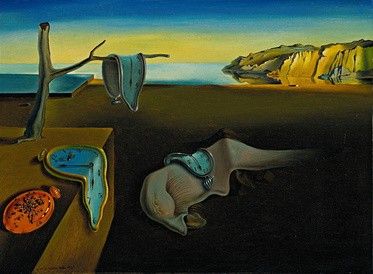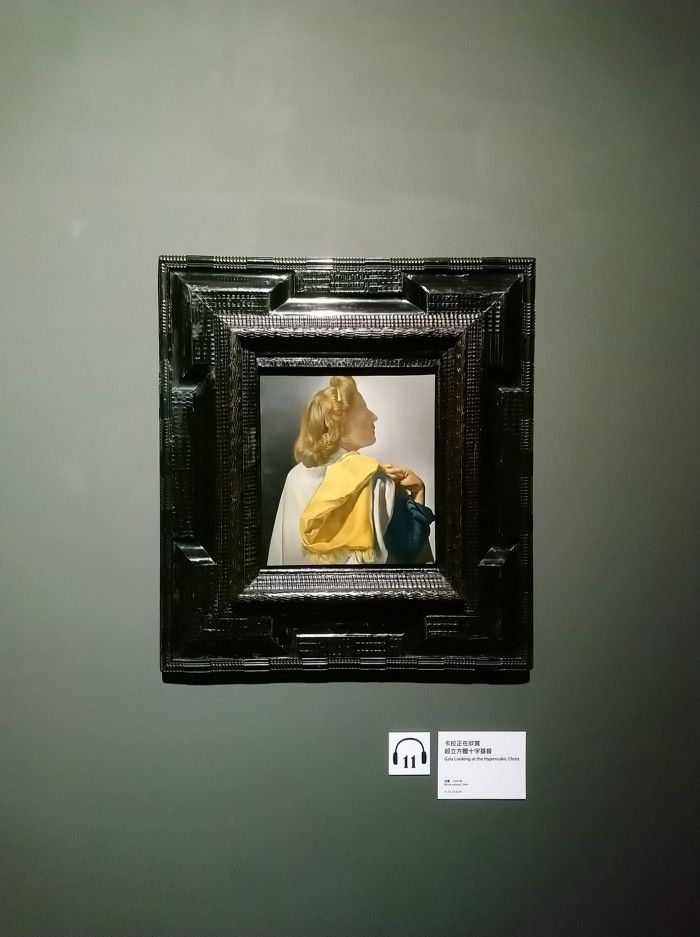📝📝: "Crazy. dream. The Divine Comedy - The Genius Dali Exhibition| Even with closed eyes, it is still clearly visible

I took time to visit the "Genius Dali Exhibition" a while ago. Dali has always been my favorite surrealist painter; Dali's reputation is internationally renowned. Even if you haven't seen Dali's paintings, I believe you have seen that " Melting Clock".

In addition to a series of representative paintings created by Dali for Dante's "The Divine Comedy", the 121 works exhibited in this exhibition venue also include many interactive optical illusions. In fact, if you combine the guided tour time of each piece, you may spend half a day viewing the exhibition! (I spent two and a half hours watching the exhibition that day, and did not apply for commentary)
Dalí once stated that he was a Surrealist (Surréalisme) influenced by Freud's Unconsciousness Theory, the founder of psychoanalysis. Perhaps due to the approach of photography, the schools of painting that emerged in the 20th century began not to take realism as their starting point; on the contrary, artists began to explore “inside”, subconscious, unconscious, dream, fantasy... Favorite elements. Surrealism is a group of artists who are immersed in it. They are interested in discovering and showing the unconscious state of mind, freeing their imagination, breaking the domination of reality and gaining freedom. , unconscious and dream experiences are combined to achieve surreal scenarios.
Next, I will share with you some of my favorite optical illusion works in the exhibition.

The nude woman facing away from the viewer in this work is Dalí's wife, Carla, who is not only Dalí's goddess of Muses but also the driving force behind his creation. Although the painting is made of large mosaics, if you look at it from a distance (or if someone who is short-sighted takes off his glasses to enjoy it), you can see that it is also the late US President Abraham. A portrait of Abraham Lincoln ; in fact, a black and white image in the lower left of the left image already cryptically reveals another interpretation of the painting.

Similar works can also be achieved on the computer:
╴
There is another group of mirrored paintings in the exhibition area, which is also my personal favorite creation.

The works in this exhibition area can't help but remind me of the American art critic John. John Berger's famous quote in Ways of Seeing :
"Seeing Before Language"
Berg said in the book
By seeing, we identify ourselves in the world around us; we explain the world with words, but words can never restore the fact that the world surrounds us. The relationship between the world we see and the world we know has never been determined. Our knowledge and beliefs affect the way we see things. When we can watch, we quickly realize that we can also be watched. When an image is presented as a work of art, the way we view it is influenced by the whole set of artistic perceptions we have learned.
In the exhibition area of optical illusions, Dalí challenged the viewing angle of paintings by the traditional school of painting. Traditional painting may only establish a head-up relationship with the viewer. However, Dalí, who was roaming in the dream, created images that were head-up, down, up, squinting, and even had to be seen through the intermediary of dreams. The exhibition area of mirror paintings presents the viewer with a viewing challenge:
Is the author trying to convey the symbol on the drawing paper or the image in the mirror? Or, both? Or, neither?
At first, I was surprised to find the different images in the mirror and on the drawing paper. I am worthy of being hailed as an artistic genius, to be able to create such a critical painting; however, the longer I looked at it, a contradictory thought emerged in my mind, "What is this? Was it an elaborate design by the artist, or was it just a joke by the artist to all the viewers?"
Like my work? Don't forget to support and clap, let me know that you are with me on the road of creation. Keep this enthusiasm together!

- Author
- More